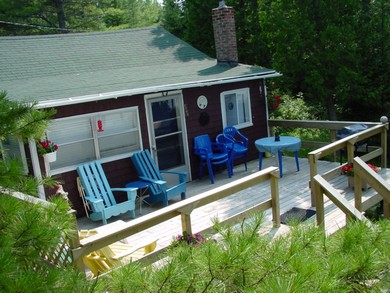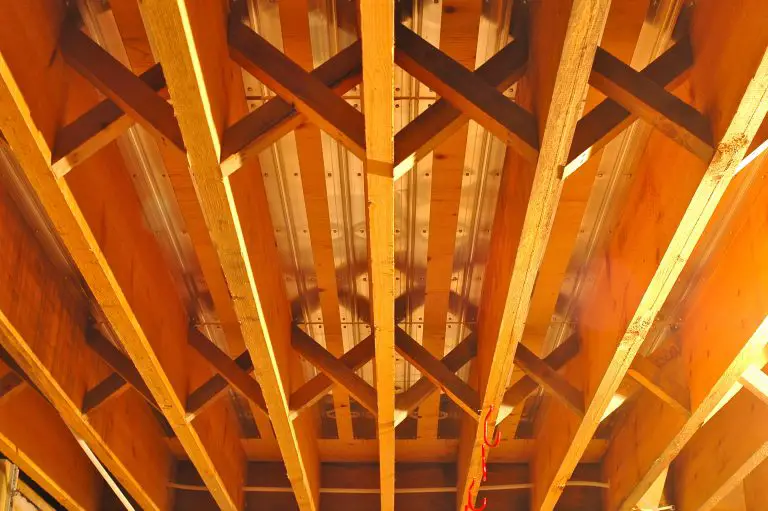 Canadians own more country getaway properties than most other people in the world because we’re blessed with so much wide-open space. And whether you call your place a cottage, a camp, or a country home, the technical challenges of keeping the property up remain more or less the same.
Canadians own more country getaway properties than most other people in the world because we’re blessed with so much wide-open space. And whether you call your place a cottage, a camp, or a country home, the technical challenges of keeping the property up remain more or less the same.
Springtime Cottage Maintenance Tips…
Cottage Roof Repairs
May is the peak month for cottage work, in part because you’ve got to make up for all that winter has inflicted on your place. And that might begin with a trip up the ladder onto the roof. Cottage country is often a windy place, and that can mean torn asphalt roof shingles.
- Start repairs with a thin-bladed pry bar, lifting the edges of neighbouring shingles held down by tar.
- Bend back the shingle above the damage zone, remove the remains of the dead shingle as far up as you can reach, then pull out visible nails.
- The new shingle won’t slide into place far enough without trimming, so slice 2 inches off its back edge for a start. Give it a try, then slice more if needed.
- Secure new shingles with blobs of roofing tar from a caulking gun, top surface and bottom.
Black Pipe Essentials
Without black polyethylene pipe, cottagers everywhere would be hauling water with buckets. It’s the workhorse of backwoods plumbing systems because it’s inexpensive and tough. But there are also several important tricks for making tight connections with black poly pipe.
- Simply slipping black poly over matched fittings then tightening down a screw clamp isn’t reliable. The connection will almost certainly leak. The key to water-tight connections is heat.
- Slide two loose screw clamps over your pipe.
- Warm it gently with a propane torch.
- Then slip the poly over the fitting and torque down the clamps with a socket wrench while things are still warm. You’ll get water-tight results, once and for all.
Safe Stove Pipes
Every woodstove in cottage country is connected to at least a few pieces of black stove pipe. And the safest installations include screws securing each pipe joint.
- A handful of #10 x 1/2-inch pan head screws, a red-handled Robertson screwdriver and a drill with a sharp 1/8-inch drill bit are all you need.
- Connect your stove to its chimney with black pipe, then drill three screw holes through the overlap at equal points around the perimeter.
- Torque the screws home and you’re done.
- The coarse thread of the #10 screw resists stripping as pipes are removed and replaced for cleaning.
Rot-Not Strategy
 An hour of work each spring or two ensures that rot won’t become an issue on decks and foundations at your cottage. All it takes is a $30 pump-up weed sprayer and a jug or two of clear, zinc-based wood preservative. It’s perfectly safe when used properly outdoors.
An hour of work each spring or two ensures that rot won’t become an issue on decks and foundations at your cottage. All it takes is a $30 pump-up weed sprayer and a jug or two of clear, zinc-based wood preservative. It’s perfectly safe when used properly outdoors.
- When the weather dries up don safety goggles and gloves.
- Then spray preservative on areas of wood-to-masonry and wood-to-wood contact.
- Mark the sprayer for this use only, and never spray anywhere near water courses.
- Even if you can’t get liquid right onto the wood-to-wood contact surfaces, spray around the edges anyway. It’ll wick into all nooks and crannies, halting rot in its tracks.
Reliable Rope
Lots of people know that melting the ends of synthetic rope stops fraying, but things can frazzle badly right after a cut — before you’ve even had a chance to strike a match or spark the propane torch into action. This is especially true with braided nylon rope, which unravels faster than picnic plans in a thunderstorm.
- The trick is to wrap masking tape where you want to make the cut.
- Snip the rope in the middle of the tape.
- Then melt the ends and let them cool before peeling the tape off. Nothing could be neater.
Nobody buys a cottage because of the chores, but completing them well offers a kind of satisfaction that’s hard to match in the city.












